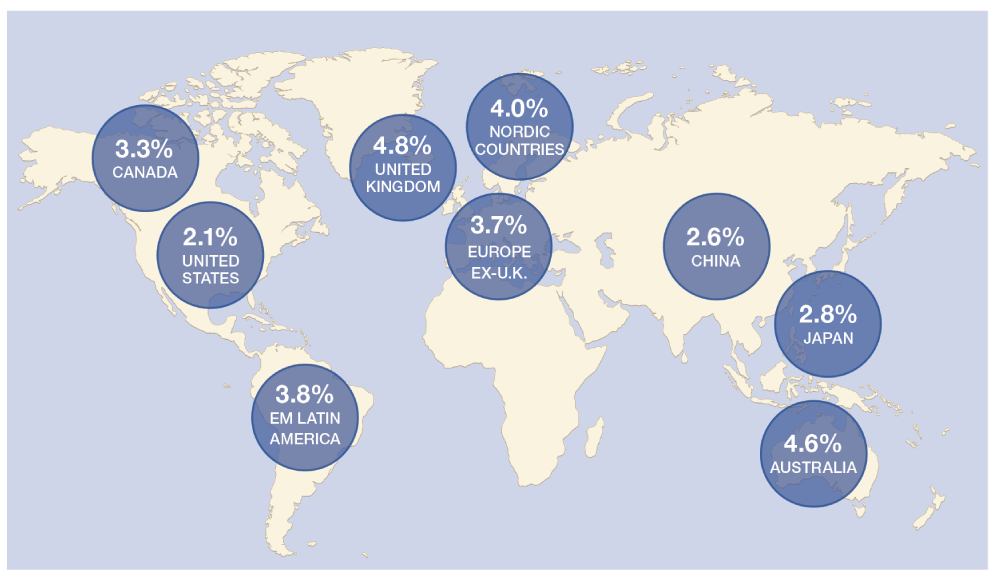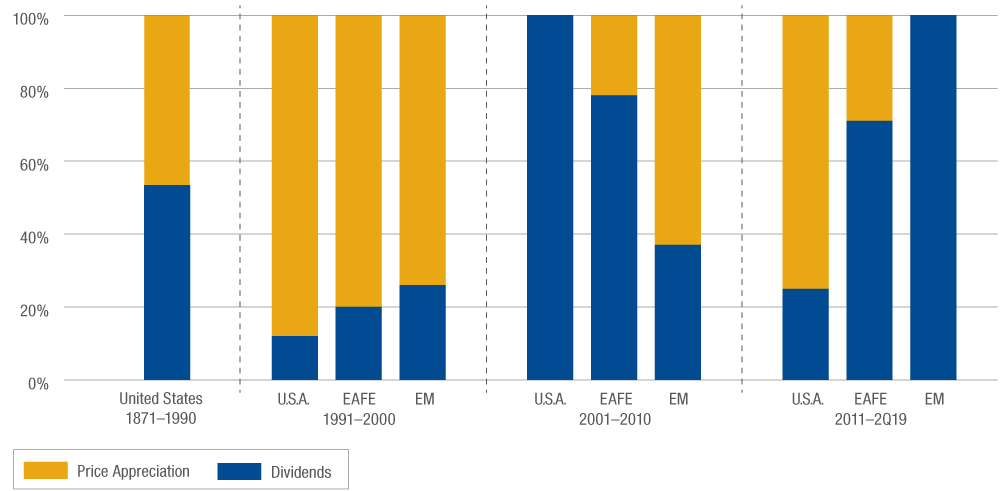
Portfolio managers seeking to generate income should consider dividend-paying stocks. See why.
As global economic growth slows and fixed income yields around the world stagnate near multi-year lows, finding an attractive source of income is becoming more challenging. Dividend-paying stocks can provide that income. Moreover, dividends have the potential to boost total returns over time, thanks to the power of compounding.
Lower Interest Rates Expected for Longer
The global financial crisis ushered in a decade of unprecedented monetary stimulus measures by the world’s major central banks. Now, interest rates in the U.S., Europe and Japan are hovering at historical lows. At the time of this writing, the yield on the U.S. 10-year Treasury is just 1.71%, the lowest it’s been since October 2016. In Germany, the 10-year bund, a proxy for interest rates across the eurozone, recently dipped into negative yield territory, as it did in late 2016. The yield on Japan’s 10-year government bond is also negative.
July’s 25 basis point rate cut by the U.S. Federal Reserve reaffirms that the Fed and other central banks are on a dovish path to stoke the fading embers of global economic growth. It’s unlikely that an extended uptrend in rates will happen anytime soon.
Attractive Stock Dividend Yields? Think Globally.
Now is the time—as it always is—to consider global equity income strategies. Why? Broadly, stock dividend yields in the U.S. and abroad are more attractive than certain asset classes traditionally relied on for income.
Today, investors across the eurozone can earn a higher yield from stock dividends than from high yield bonds. European Central Bank monetary policy has compressed fixed income yields to the point where the spread (the difference) between high yield bonds and the region’s overall stock dividend yield is essentially zero. In the U.S. the spread between high yield bonds and the dividend yield on stocks is low relative to its historical average. In this environment, global equity income strategies, some which yield over 4%, become a compelling option for income seekers.
Global Dividend Yields by Country (2019 estimates as of 6/30/19)

Source: Thornburg, Bloomberg
Dividends: Key to Total Equity Return—Especially Internationally
Stock dividends have historically played a large part in driving equity returns. They have contributed over 50% of U.S. equities’ total return since the early 1870s. The impact of dividends on international equity returns is even more pronounced, thanks to dividend yields that are often higher abroad. Since 2011, dividends have accounted for essentially all of emerging market equity returns and approximately 70% of developed international equity returns (see chart below). While many investors consider the potential for capital appreciation to be the primary reason behind owning stocks, it’s the dividend that can, at times, provide the most benefit to investors—especially given today’s investment landscape.
Contribution to Total Market Return from Dividends and Price Appreciation (as of 6/30/2019)

Sources: Data after 1990 is from MSCI indices. U.S. data from 1871–1990 is from “An Analysis of the S&P 500 Index and Cowles’s Extensions: Price Indexes and Stock Returns, 1870–1999,” Jack W. Wilson and Charles P. Jones, Journal of Business, 2002, vol. 75 no 3. Calculated by Thornburg Investment Management as of 6/30/19). Returns are annualized.
In today’s world of slowing growth, high asset valuations and low interest rates, global equity income strategies demand attention from investors seeking attractive income and total returns.
Discover more about:
More Insights

Fishing In A Profitable Pond

Finding Opportunity Amid Imbalance: 2026 Market Outlook

Thornburg Income Builder Opportunities Trust Announces Distribution

Ferrari’s Electric Future and the Evolution of Luxury Investing

FOMC Update: Fed Approves Third Consecutive Rate Cut, Projects Slower Pace


